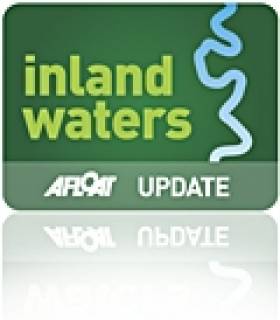Displaying items by tag: EU LIFE programme
Coastal Machair Habitats to Benefit from EU Funding
Conservation of Ireland’s coastal machair habitats will benefit from some €7.4 million in funding, Minister of State for Heritage Malcolm Noonan has said.
Some €5.7 million of the total sum of €7.4 million will be drawn from the new EU LIFE project, Mr Noonan said.
The project will work with Donegal, Mayo and Galway farmers to improve ecological conditions for breeding waders and pollinators, he said.
The LIFE programme is the EU’s funding instrument for the environment and climate action.
The “LIFE On Machair” project aims to work with farmers and landowners to improve the conservation condition of Ireland’s machair habitats and the ecological conditions for breeding waders and pollinators within project sites, Noonan explained.
He said an integrated approach will provide “education, guidance, and informed management policies for stakeholders, and deliver concrete conservation actions within a network of machair and wader Natura 2000 sites”.
The project extends over a total machair system area of about 3,500 hectares, he said.
Machair is defined as a coastal habitat characterised by lime-rich, wind-blown sand plains unique to the north and west of Ireland and Scotland.
“The typical flower-rich vegetation of machair is traditionally maintained through low-intensity livestock grazing, but is susceptible to pressures from recreational activities and overgrazing,” Noonan’s department said.
“Machair ecosystems provide an important refuge for pollinators and threatened breeding wader bird species, such as dunlin, lapwing and redshank,” it said.
“Post-Brexit, the entire EU land cover of the habitat occurs in Ireland, meaning the conservation of machair in Ireland is of significance on a European scale,” the department pointed out.
The LIFE on Machair project will focus on nine special areas of conservation and four special protection areas in counties Donegal, Mayo and Galway.
A voluntary results-based payment scheme will be linked to the quality of the habitat, placing the landowner’s skills, expertise and knowledge central to the development of this project, the department said.
“The award of this funding is a very positive development in addressing the urgent need for conservation and restoration of biodiversity in our coastal areas,” Noonan said.
“I am hopeful that this project will help conserve Ireland’s unique machair systems whilst also supporting coastal rural communities, providing employment opportunities and an important financial injection,” he said.
Amateur Photo Contest Celebrates Shannon's Biodiversity
#LIFE ON THE SHANNON - MulkearLIFE has launched its amateur photo competition for 2012, with a prize fund of €1,000 on offer.
The contest celebrates the 20th anniversary of the EU LIFE programme and has the theme of ‘Exploring the Biodiversity of the Lower Shannon’. Images may cover any aspect of the theme, and can be submitted in any style from macro to landscape, black and white or colour.
There is no end to what type of image can be submitted. It could be an image of water, trees, plants, fish, invertebrates, fungi, mammals, birds, lichen, domestic animals - basically any living organism.
Though not essential, images that portray biodiversity in and along rivers, streams and waterways throughout the Lower Shannon region would be preferred.
Entry is free, and entrants can submit up to three images. Prizes will be offered in two categories: Children/Young Adults and Adults.
In addition, the overall winner will receive one full day's training in wildlife and landscape photography from a leading wildlife photographer later in 2012.
Full details of how to enter the competition are available on the MulkearLIFE website HERE. The closing date is 1 May 2012 at 5pm.






























































